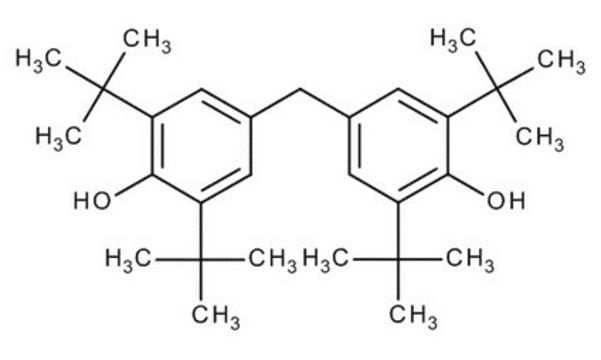422002
Hexamethylenediamine
technical grade, 70%
Synonyme(s) :
1,6-Diaminohexane, 1,6-Hexanediamine, HMDA
About This Item
Produits recommandés
Qualité
technical grade
Densité de vapeur
4 (vs air)
Pureté
70%
Forme
liquid
Limite d'explosivité
6.3 %
Technique(s)
gas chromatography (GC): suitable
Indice de réfraction
n20/D 1.439 (lit.)
Point d'ébullition
111-130 °C
Pf
42-45 °C (lit.)
Solubilité
alcohol: soluble(lit.)
hydrocarbons: soluble(lit.)
water: soluble(lit.)
Densité
0.89 g/mL at 25 °C (lit.)
Chaîne SMILES
NCCCCCCN
InChI
1S/C6H16N2/c7-5-3-1-2-4-6-8/h1-8H2
Clé InChI
NAQMVNRVTILPCV-UHFFFAOYSA-N
Informations sur le gène
rat ... Ppm1a(24666)
Vous recherchez des produits similaires ? Visite Guide de comparaison des produits
Description générale
Application
- polyamides and their hydrolytic and fungal degradability was investigated
- mullite ceramics
- dialkyl hexamethylene-1,6-dicarbamate (AHDC), via trans-esterification reaction of HDA and alkyl carbamates (AC) using FeCl3 as catalyst
Autres remarques
Mention d'avertissement
Danger
Mentions de danger
Conseils de prudence
Classification des risques
Acute Tox. 4 Oral - Eye Dam. 1 - Skin Corr. 1B - STOT SE 3
Organes cibles
Respiratory system
Code de la classe de stockage
8A - Combustible corrosive hazardous materials
Classe de danger pour l'eau (WGK)
WGK 1
Point d'éclair (°F)
201.2 °F
Point d'éclair (°C)
94 °C
Certificats d'analyse (COA)
Recherchez un Certificats d'analyse (COA) en saisissant le numéro de lot du produit. Les numéros de lot figurent sur l'étiquette du produit après les mots "Lot" ou "Batch".
Déjà en possession de ce produit ?
Retrouvez la documentation relative aux produits que vous avez récemment achetés dans la Bibliothèque de documents.
Les clients ont également consulté
Notre équipe de scientifiques dispose d'une expérience dans tous les secteurs de la recherche, notamment en sciences de la vie, science des matériaux, synthèse chimique, chromatographie, analyse et dans de nombreux autres domaines..
Contacter notre Service technique














